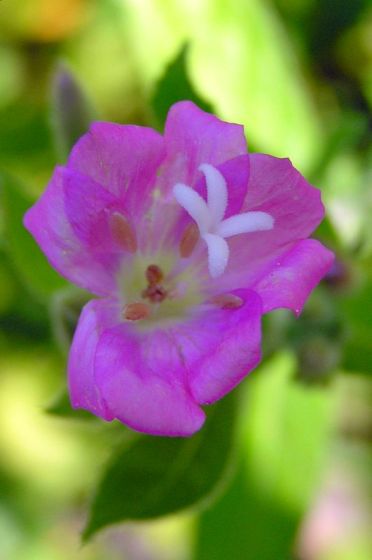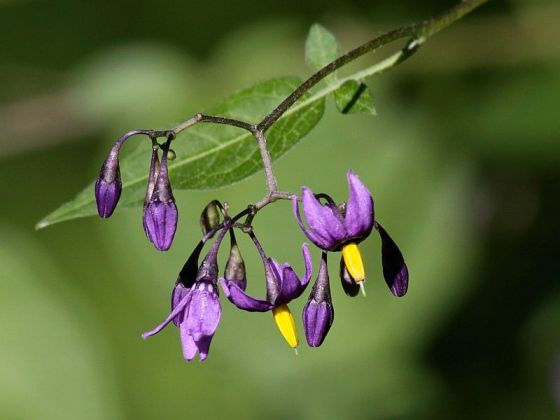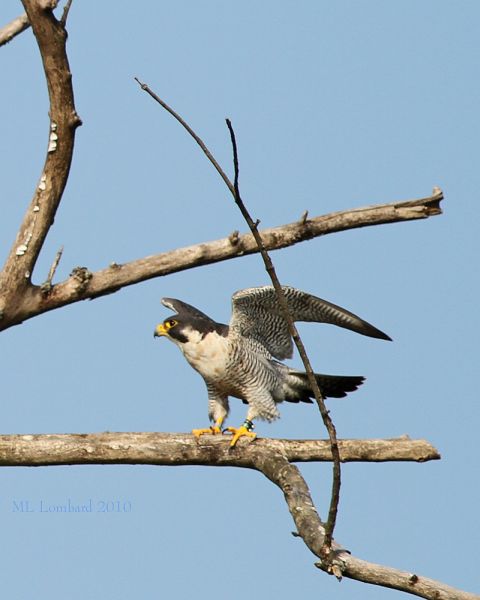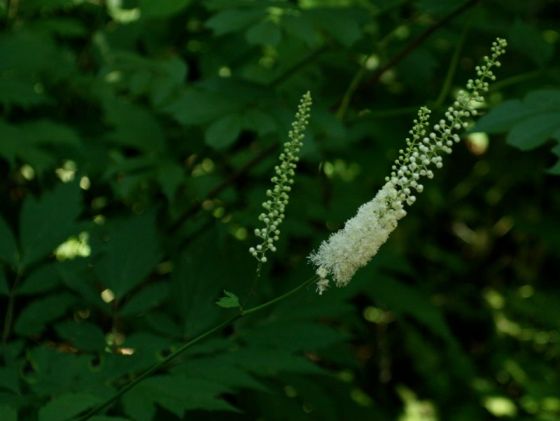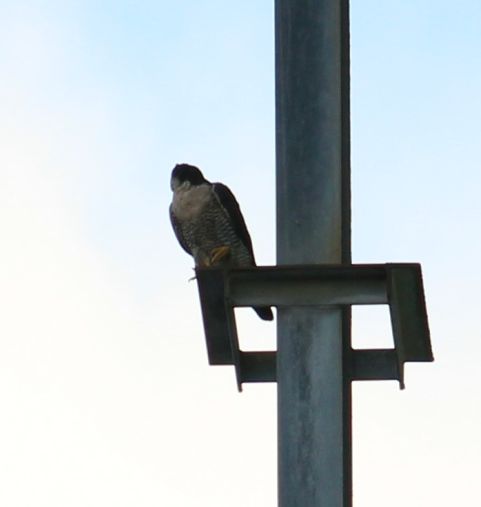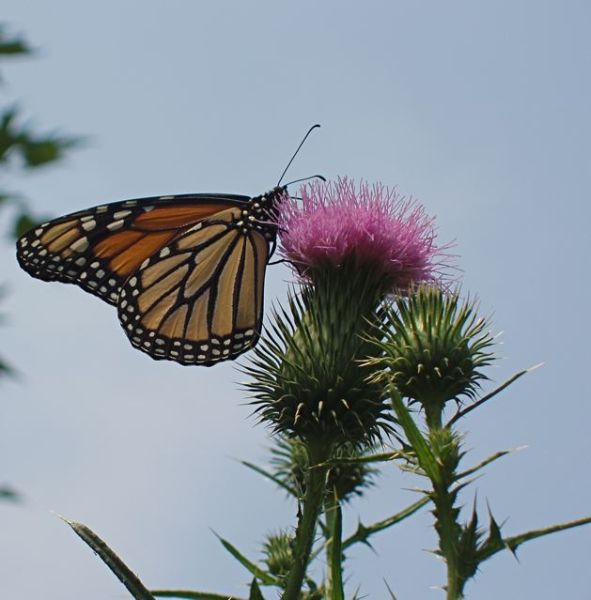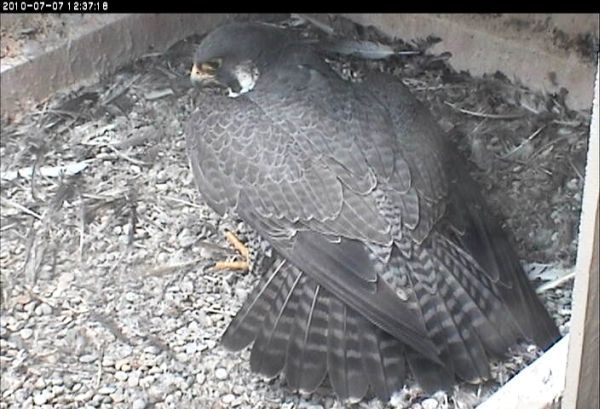
The snapshot camera at the University of Pittsburgh peregrine nest isn’t broadcasting but it’s capturing motion detection images to confirm the male peregrine’s identity. (Yes, we’ve confirmed he’s E2.)
The nest is usually vacant but Dorothy stopped by and fanned her feathers earlier this month. The only excitement occurred last Wednesday when one of the youngsters showed up and begged loudly for food. The same thing happened on Friday at Gulf Tower.
It must have been the week to stop by the old homestead and ask for a hand-out. I know the begging youngsters weren’t White or Yellow, the rehab birds, because they haven’t been released yet.
In other news:
- According to Steve Valasek it’s quiet at the Tarentum Bridge except for an adult peregrine who still shows up at dusk.
- In Lancaster the nestlings are getting ready to fledge. Meredith Lombard has new photos in the Peregrines folder at this link.
- In Columbus Ohio, the resident female peregrine at the Rhodes State Office Building has changed three times since July 1. Read about it here.
Other than that, it’s quiet. Dorothy spends time roosting in the shade near the top of the Cathedral of Learning.
I’m always happy to see her, even if she isn’t doing anything.
My favorite bird.
(photo from the National Aviary snapshot camera)
